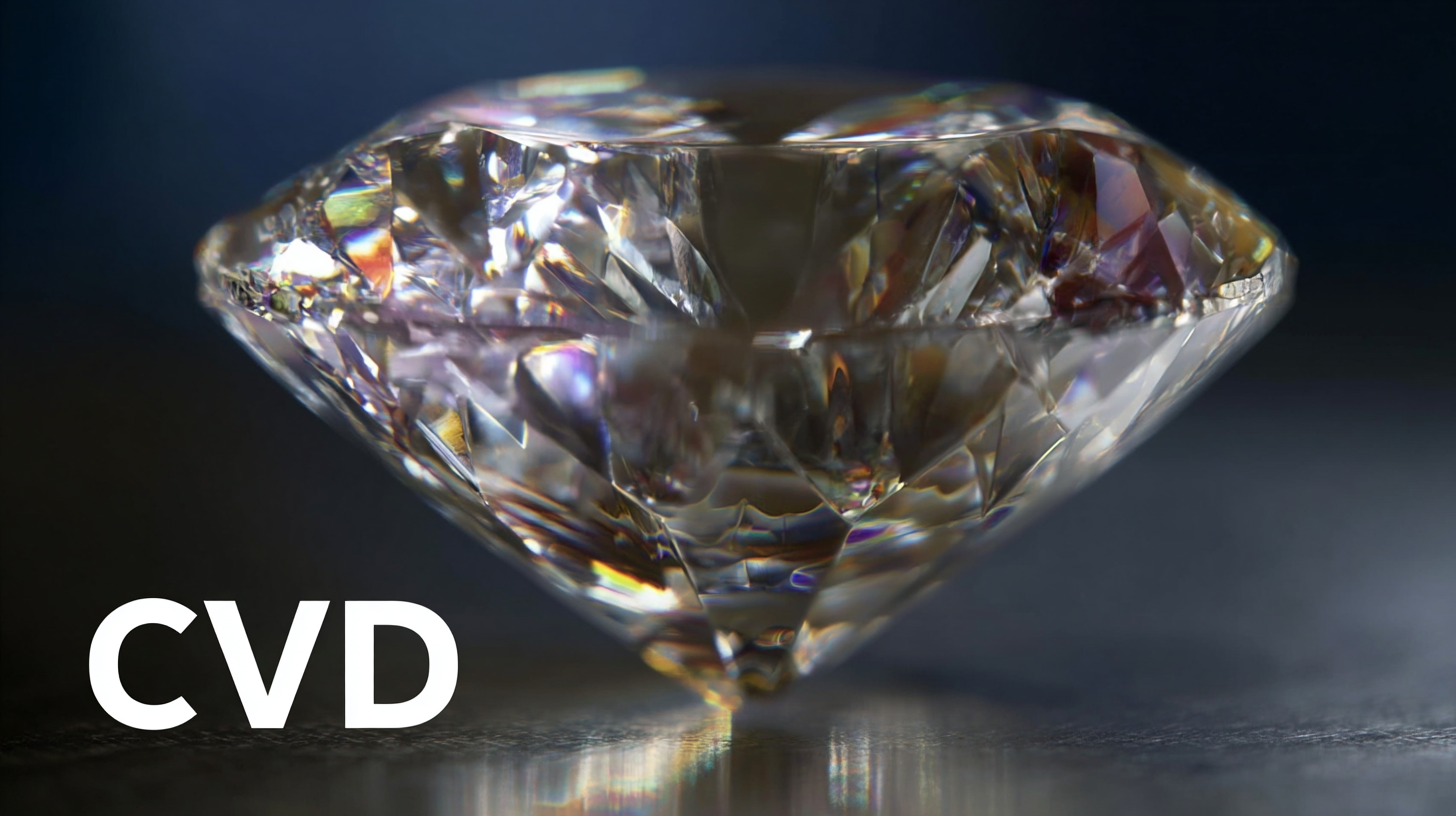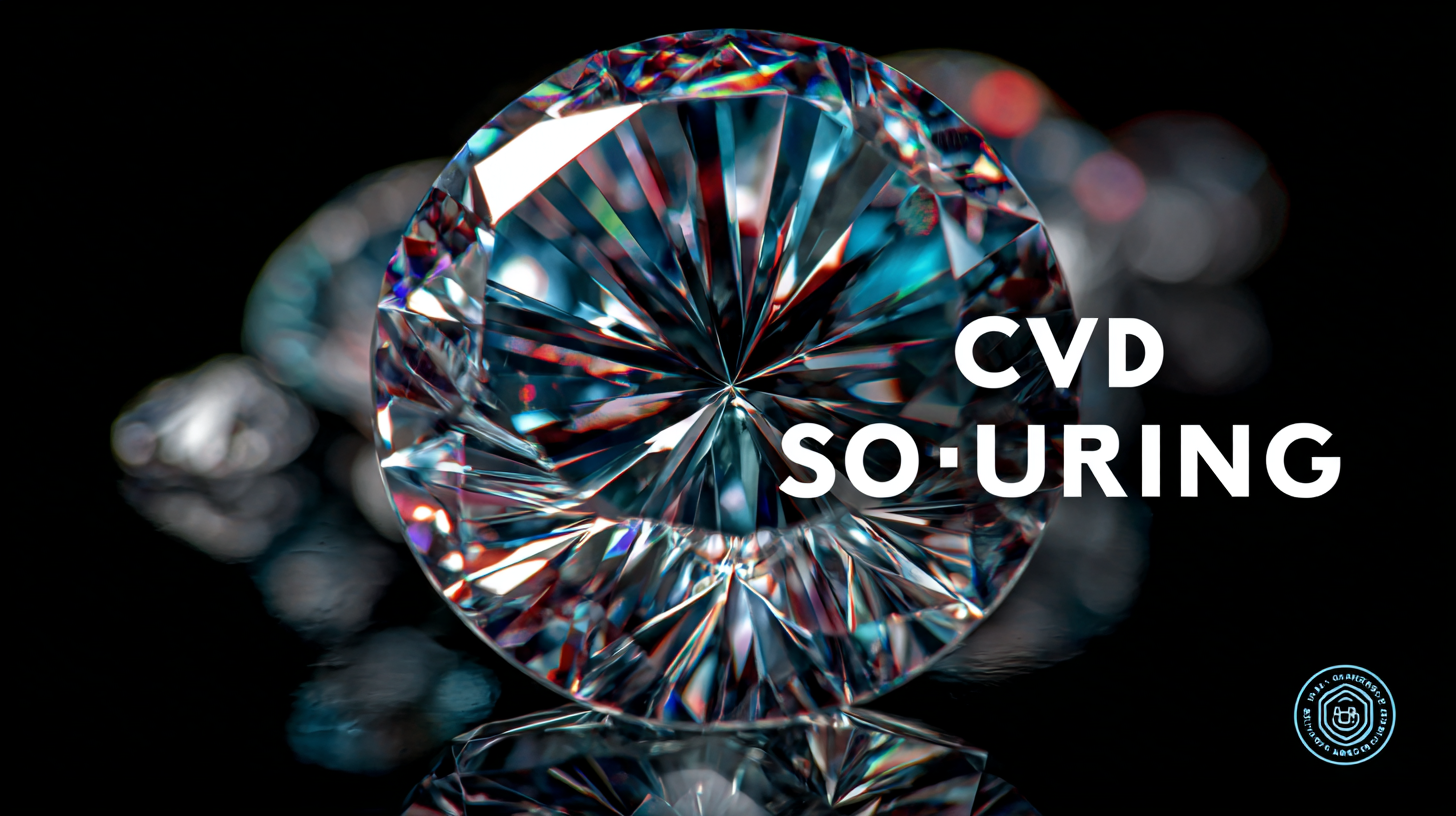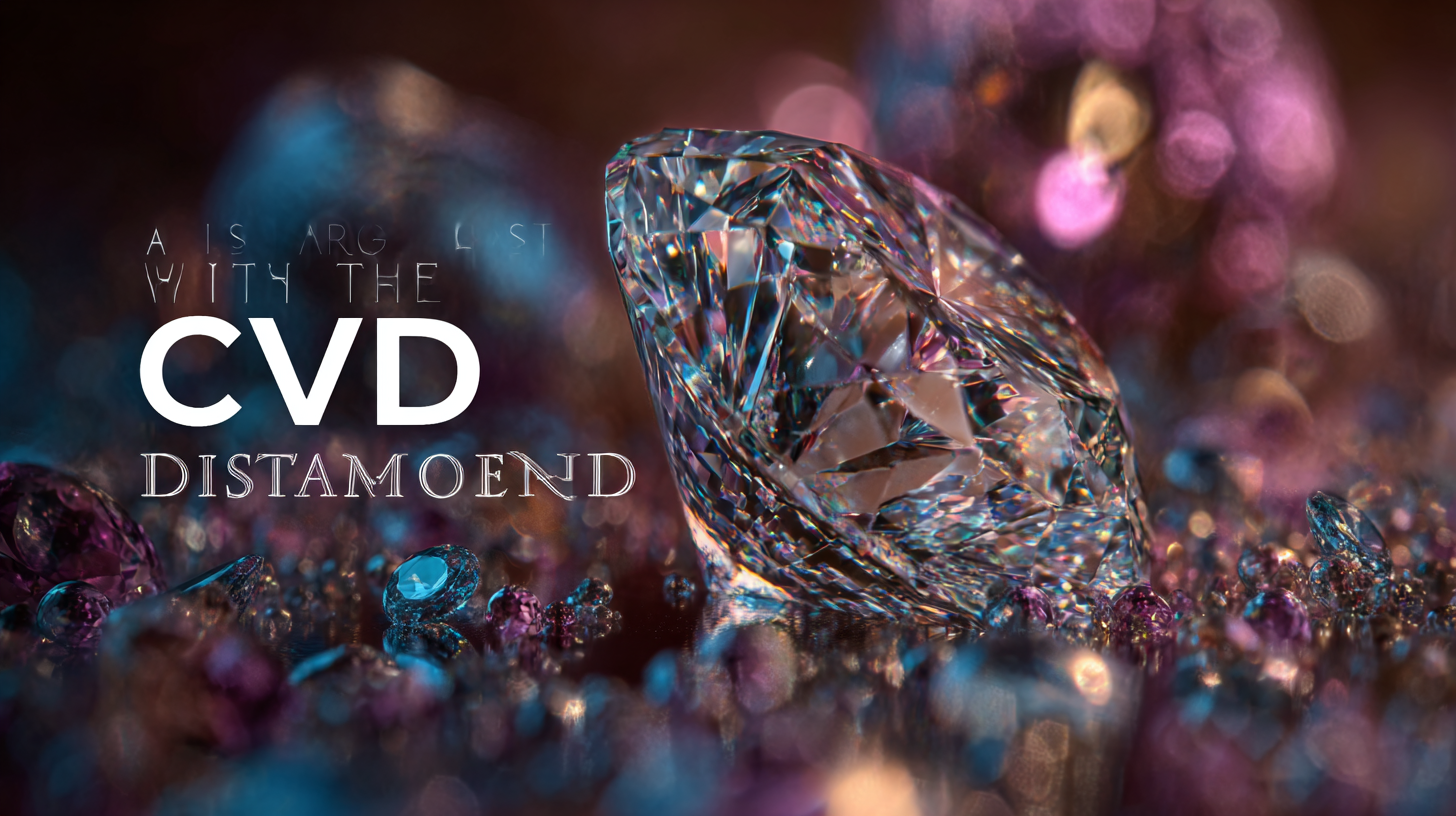
 In recent years, the demand for CVD diamonds has surged, driven by their ethical sourcing and environmental benefits compared to traditional mined diamonds. According to a report by Research and Markets, the CVD diamond market is expected to reach approximately $28 billion by 2025, reflecting a compound annual growth rate (CAGR) of 12.2% from 2020 to 2025. This growth is attributed to the increasing adoption of CVD diamonds in various applications, including jewelry, electronics, and cutting tools. As consumers become more educated about the advantages of lab-grown diamonds, understanding the nuances of sourcing high-quality CVD diamonds has become essential.
In recent years, the demand for CVD diamonds has surged, driven by their ethical sourcing and environmental benefits compared to traditional mined diamonds. According to a report by Research and Markets, the CVD diamond market is expected to reach approximately $28 billion by 2025, reflecting a compound annual growth rate (CAGR) of 12.2% from 2020 to 2025. This growth is attributed to the increasing adoption of CVD diamonds in various applications, including jewelry, electronics, and cutting tools. As consumers become more educated about the advantages of lab-grown diamonds, understanding the nuances of sourcing high-quality CVD diamonds has become essential.
This comprehensive guide will explore the art of sourcing, providing valuable insights and practical tips to navigate the market effectively and ensure that you procure the best CVD diamonds available.
CVD diamonds, or Chemical Vapor Deposition diamonds, are synthesized in controlled environments to exhibit properties similar to natural diamonds. These diamonds are composed primarily of carbon atoms arranged in a crystal lattice structure, which gives them exceptional hardness and thermal conductivity. One of the key benefits of CVD diamonds is their versatility; they can be engineered for specific applications, ranging from industrial uses in cutting tools to their aesthetic appeal in jewelry.
The unique properties of CVD diamonds make them ideal for various technological advancements. Their superior thermal conductivity is particularly beneficial in electronics, where managing heat is crucial for performance. Moreover, their optical clarity and brilliance rival that of natural diamonds, making them a sought-after choice for gem enthusiasts. As the demand for sustainable and ethically sourced materials grows, CVD diamonds offer an attractive alternative to traditional mining, aligning with environmentally-friendly practices while delivering high-quality products.
 CVD diamonds, or chemical vapor deposited diamonds, have become a significant player in both the engagement ring market and various industrial applications. Understanding their key technical specifications is essential for sourcing the best quality diamonds. One of the most important aspects to consider is the 4C classification—cut, color, clarity, and carat weight. Each factor contributes to the overall quality and aesthetic appeal of the diamond. For instance, colorless CVD diamonds provide exceptional brilliance and sparkle, making them highly sought after for jewelry.
CVD diamonds, or chemical vapor deposited diamonds, have become a significant player in both the engagement ring market and various industrial applications. Understanding their key technical specifications is essential for sourcing the best quality diamonds. One of the most important aspects to consider is the 4C classification—cut, color, clarity, and carat weight. Each factor contributes to the overall quality and aesthetic appeal of the diamond. For instance, colorless CVD diamonds provide exceptional brilliance and sparkle, making them highly sought after for jewelry.
Another critical specification is the growth method of the CVD diamonds, which directly influences their physical properties, such as thermal conductivity and electronic characteristics. The latest technologies in homoepitaxial growth lead to superior diamond quality with atomically controlled surfaces. This results in not just aesthetic advantages but also improved performance in various applications, including semiconductor technology. As the market for lab-grown diamonds continues to grow, being well-versed in these specifications will empower you to make informed decisions in your sourcing process.
The diamond market is witnessing a transformative shift as lab-grown diamonds, particularly those produced through Chemical Vapor Deposition (CVD), gain popularity. In 2023, the global lab-grown diamond market was valued at an impressive USD 22.79 billion, with projections suggesting significant growth to USD 74.45 billion by 2030. This surge can be attributed to the rising awareness and acceptance of CVD diamonds, which offer a cost-effective and ethically-produced alternative to natural diamonds.
When comparing CVD diamonds to their natural counterparts, several key differences emerge. CVD diamonds are synthesized in highly controlled environments, leading to superior crystal quality and fewer inclusions. Furthermore, advancements in synthesis technologies and catalysts have enhanced the characteristics of CVD diamonds, making them a competitive choice for consumers. As natural diamond prices decline, the allure of CVD diamonds, backed by their traceable origin and sustainable production methods, continues to rise, reshaping consumer preferences and industry dynamics.
When sourcing high-quality Chemical Vapor Deposition (CVD) diamonds, several critical factors must be considered to ensure the authenticity and durability of the gems. One primary factor is the diamond's grading, which encompasses characteristics such as cut, color, clarity, and carat weight—commonly referred to as the 4Cs. A recent report by the Gemological Institute of America (GIA) reveals that CVD diamonds can achieve comparable clarity and color ratings as their natural diamond counterparts, making them an attractive choice for discerning buyers.
Another essential aspect of sourcing CVD diamonds is the ethical implications and environmental impact associated with their production. According to a study by the Diamond Foundry, CVD diamonds have a lower carbon footprint compared to mined diamonds, with a reduction of up to 90% in emissions during their production process. This awareness has led consumers to favor CVD diamonds, as they not only offer superior quality but also align with sustainable practices.
By focusing on reputable sources and understanding these critical factors, buyers can confidently navigate the market for high-quality CVD diamonds.
When it comes to purchasing CVD (Chemical Vapor Deposition) diamonds,
understanding grading reports and certifications is crucial. Recent updates in the diamond grading landscape
indicate a shift away from the traditional 4Cs system that many consumers rely on. Instead, new
terminology will be used to more accurately reflect the qualities of lab-grown diamonds.
This evolution in grading not only helps buyers make informed decisions but also addresses some common misconceptions
about lab-grown versus natural diamonds.
Scrutinizing grading reports is essential before making a purchase. Buyers should seek
certifications from reputable gemological organizations that can provide a clear and straightforward assessment of
the diamond's characteristics. It's important to recognize that while lab-grown diamonds are increasingly popular,
they must be evaluated on their own merit. From color to clarity, understanding these new grading terms will empower
consumers and enhance their shopping experience, ensuring they find the right
CVD diamond that meets their expectations in quality and value.






